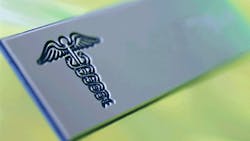Sticking Point: Surgeons Face Injury Risk from Needles, Sharp Objects
Injuries from needles and sharp objects top the list of occupational hazards for surgeons, according to researchers from the University of Michigan Health System. These injuries could expose surgeons to infectious diseases.
Nearly 400,000 sharps injuries occur each year in the United States. About 25 percent of injured workers are surgeons, who face the highest risks in the operating room. According to researchers, nearly all surgeons will sustain a sharps injury sometime during their career. Medical students and residents are also at high risk, as fatigue and inexperience are important risk factors.
"Despite health care policies designed to protect health care workers, injuries remain common," American Society of Plastic Surgeon (ASPS) Member Surgeon Dr. Kevin C. Chung and colleagues wrote in their report. They recommended increased awareness, reporting and prevention.
A Sharp Risk
Sharps injuries, which require testing and treatment, can have a major economic impact. Average costs for testing, follow-up and preventive treatment range from $375 for needlestick exposure from a patient with no known blood-borne illness, up to nearly $2,500 for injuries from a patient with known HIV.
While HIV is the most-feared result of a sharps injury, the risk of infection with hepatitis B virus actually is much higher. Sharps injuries also can have a significant psychological impact on the injured person and his or her family – particularly during the time needed to confirm that the injured worker is free of infection, which may take several weeks or months.
Once an injury occurs, there are standardized guidelines for post-exposure prevention, depending on whether the patient has any known transmissible infections. Recommendations include antiviral medications for health care workers exposed to HIV and hepatitis B or C virus – ideally starting within hours after the injury.
Reporting and Prevention
Post-exposure prevention can only be executed if the injury is reported. One study found that 70 percent of surgeons "never or rarely" report sharps injuries. They may feel they "don't have time" to report, or may misunderstand the risks involved.
Chung and colleagues stressed that the majority of sharps injuries are preventable. Engineered safety devices can prevent many injuries, especially if surgeons and other workers are involved in choosing to use them. Other options include the use of "non-sharp" alternatives, creating safe procedures for passing sharp instruments and wearing double gloves to reduce the risk of infection.
Over the years, regulations have been introduced to ensure that proper prevention and reporting strategies are in place. Introduction of the Needlestick Safety and Prevention Act of 2000 led to an overall 38 percent reduction in injuries in all care settings. However, one study reported that the rate of sharps injuries in the operating room actually increased.
“Although preventive strategies exist, their success ultimately relies on clinician compliance,” explained Chung and his co-authors.
The authors hope their review will help to increase awareness of the risks and potential harms of sharps injuries among surgeons and operating room personnel, and to increase awareness of efforts to reduce the risk. They conclude,
“Targeting educational initiatives during medical school and training may improve knowledge among surgeons of the safest ways to practice in the operating room, and ensuring compliance among all surgeons in practice can reduce the economic and psychosocial burden of these highly prevalent injuries,” they concluded.
The study appeared in the April issue of Plastic and Reconstructive Surgery, the official medical journal of ASPS.
About the Author

Laura Walter
Laura Walter was formerly senior editor of EHS Today. She is a subject matter expert in EHS compliance and government issues and has covered a variety of topics relating to occupational safety and health. Her writing has earned awards from the American Society of Business Publication Editors (ASBPE), the Trade Association Business Publications International (TABPI) and APEX Awards for Publication Excellence. Her debut novel, Body of Stars (Dutton) was published in 2021.
